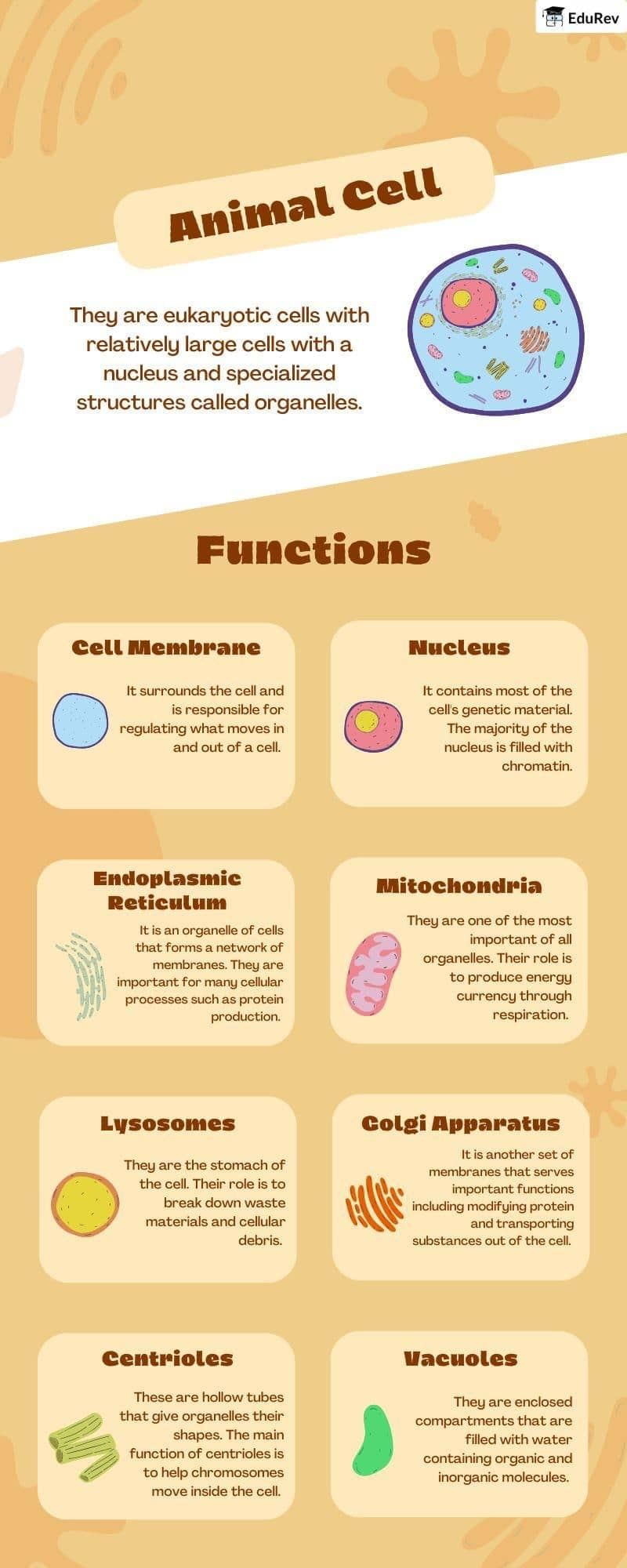NEET Exam > NEET Notes > Biology Class 11 > Infographic: The Animal Cell
Infographic: The Animal Cell | Biology Class 11 - NEET PDF Download

The document Infographic: The Animal Cell | Biology Class 11 - NEET is a part of the NEET Course Biology Class 11.
All you need of NEET at this link: NEET
|
150 videos|401 docs|136 tests
|
FAQs on Infographic: The Animal Cell - Biology Class 11 - NEET
| 1. What are the main components of an animal cell? |  |
Ans. An animal cell consists of several key components, including the cell membrane, cytoplasm, nucleus, mitochondria, endoplasmic reticulum (smooth and rough), Golgi apparatus, lysosomes, and ribosomes. Each of these structures plays a specific role, such as energy production, protein synthesis, and cellular communication.
| 2. How does the cell membrane function in an animal cell? |  |
Ans. The cell membrane functions as a protective barrier that controls the movement of substances in and out of the cell. It is composed of a phospholipid bilayer with embedded proteins that facilitate transport and communication. The membrane's selective permeability ensures that essential nutrients enter the cell while waste products are expelled.
| 3. What is the role of the nucleus in an animal cell? |  |
Ans. The nucleus serves as the control center of the animal cell, housing the cell's genetic material (DNA). It is responsible for regulating gene expression and coordinating various cellular activities, including growth, metabolism, and reproduction. The nucleus is surrounded by a nuclear envelope that contains pores for material exchange.
| 4. What is the significance of mitochondria in animal cells? |  |
Ans. Mitochondria are known as the powerhouses of the cell because they generate adenosine triphosphate (ATP), the energy currency of the cell. They achieve this through cellular respiration, where glucose and oxygen are converted into ATP, carbon dioxide, and water. Mitochondria also play a role in regulating cellular metabolism and apoptosis (programmed cell death).
| 5. How do lysosomes function in maintaining cellular health? |  |
Ans. Lysosomes are membrane-bound organelles that contain digestive enzymes. They function to break down waste materials and cellular debris, recycling components for reuse. This process is essential for maintaining cellular health, as it prevents the accumulation of harmful substances and supports cellular homeostasis.
Related Searches
















